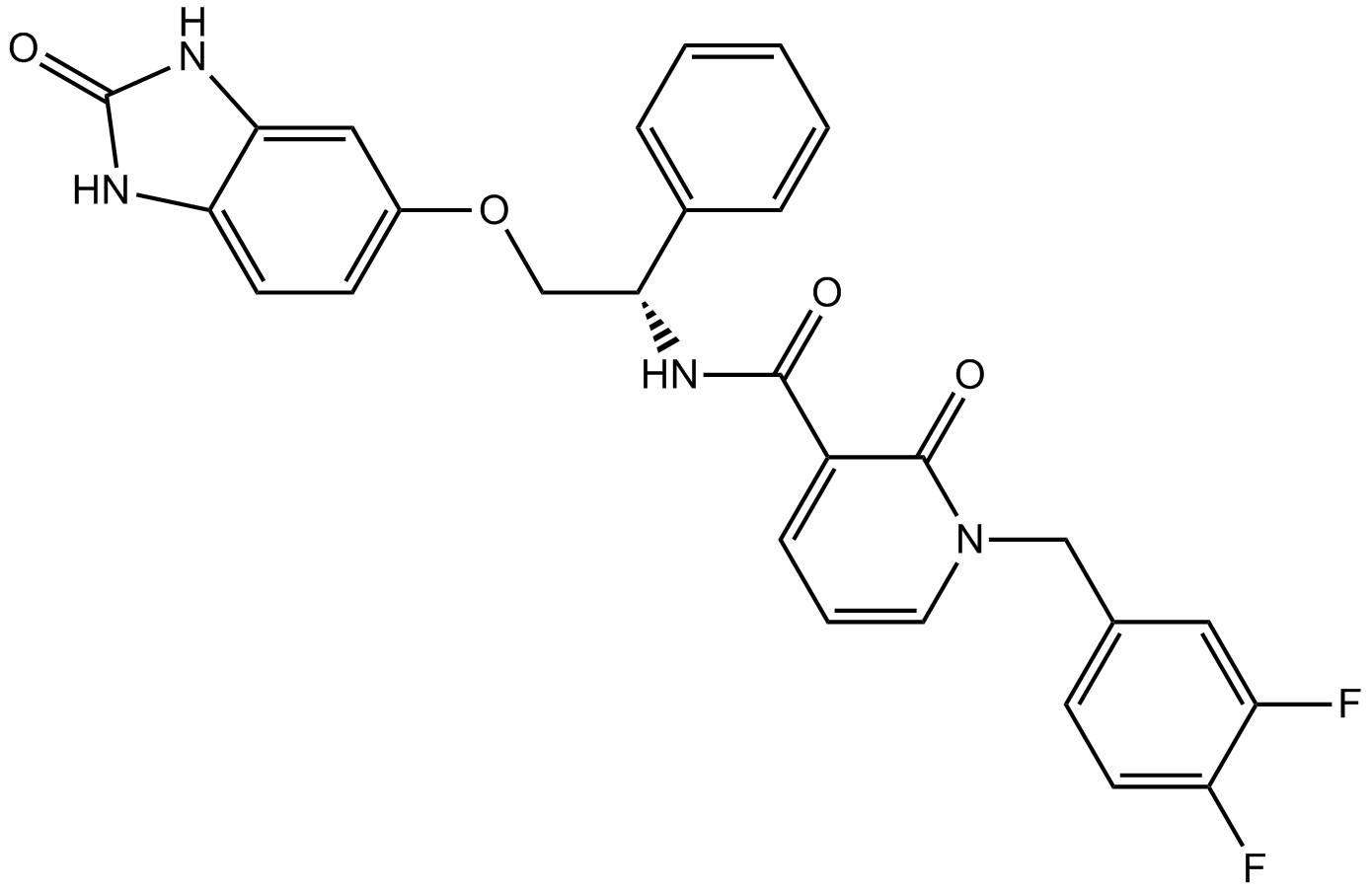PDK1 inhibitor |
| Catalog No.GC12866 |
Products are for research use only. Not for human use. We do not sell to patients.

Cas No.: 1001409-50-2
Sample solution is provided at 25 µL, 10mM.
PDK1 inhibitor is an potent and selective inhibitor of PDK1 with potential as anticancer agent. GSK 2334470,a inhibitor of PDK1, has IC50 value of 0.00251µM and CHEMBL1172241 with IC50 value of 0.085µM. [1]
PDPK1 stands for 3-phosphoinositide-dependent protein kinase 1, which is crucial for the activation of AKT/PKB and many other AGC kinases including PKC, S6K, SGK. [2]An important role for PDPK1 is in the signalling pathways activated by several growth factors and hormones including insulin signaling. PDPK1 functions downstream of PI3K through PDPK1's interaction with membrane phospholipids.[3]PI3K indirectly regulates PDPK1 by phosphorylating phosphatidylinositols which in turn generates phosphatidylinositol (3,4)-bisphosphate and phosphatidylinositol (3,4,5)-trisphosphate. [4]However, PDPK1 is believed to be constitutively active and does not always require phosphatidylinositols for its activities. Phosphatidylinositols are only required for the activation at the membrane of some substrates including AKT. PDPK1 however does not require membrane lipid binding for the efficient phosphorylation of most of its substrates in the cytosol.PDK1 is implicated in the development and progression of melanomas.[5]Many cancer-driving mutations induce activation of PDK1 targets including Akt, S6K (p70 ribosomalS6 kinase) and SGK (serum- and glucocorticoid-induced protein kinase).
GSK2334470 is more effective at inhibiting PDK1 substrates that are activated in the cytosol rather than at the plasma membrane. Consistent with this, GSK2334470 inhibited Akt activation in knock-in embryonic stem cells expressing a mutant of PDK1 that is unable to interact with phosphoinositides more potently than in wild-type cells by Immunoblotting.[6]GSK2334470 also suppressed T-loop phosphorylation and activation of RSK2 (p90 ribosomal S6 kinase 2), another PDK1 target activated by the ERK(extracellular-signal-regulated kinase) pathway.[7] GSK2334470 will be useful in probing biological processes controlled by PDK1. Therefore, GSK2334470 is much more specific than other reported PDK1 inhibitors.
Reference:
1.MurphyST. et al. Discovery of novel, potent, and selective inhibitors of 3-phosphoinositide-dependent kinase (PDK1). J Med Chem. 2011, 54(24):8490-500.
2.Mora A, Komander D, van Aalten DM, Alessi DR. "PDK1, the master regulator of AGC kinase signal transduction". Semin. Cell Dev. Biol. 2004,15 (2): 161-70.
3.Vanhaesebroeck B, Alessi DR. "The PI3K-PDK1 connection: more than just a road to PKB". Biochem. J. 2000, 346 (3): 561-76.
4.Frödin M, Antal TL. Et al. "A phosphoserine/threonine-binding pocket in AGC kinases and PDK1 mediates activation by hydrophobic motif phosphorylation". EMBO J. 2002, 21 (20): 5396-407.
5.Scortegagna, M.. et al. "Genetic inactivation or pharmacological inhibition of Pdk1 delays development and inhibits metastasis of BrafV600E::Pten-/- melanoma". Oncogene.2013.
6.Ayaz NAJAFOV. Characterization of GSK2334470, a novel and highly specific inhibitor of PDK1. Biochem. J. (2011) 433, 357-369 .
7.Tamguney, T. et al. Analysis of 3-phosphoinositide-dependent kinase-1 signaling and function in ES cells. Cell ,2008, 314, 2299–2312.
Average Rating: 5 (Based on Reviews and 30 reference(s) in Google Scholar.)
GLPBIO products are for RESEARCH USE ONLY. Please make sure your review or question is research based.
Required fields are marked with *




















